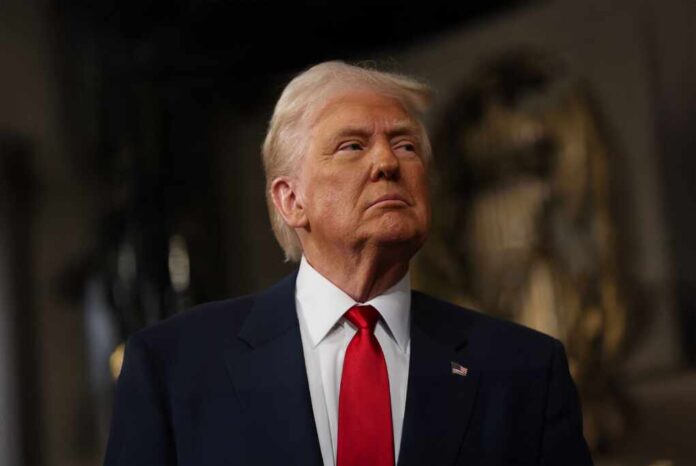
President Trump is taking a hard stance to renegotiate USMCA, aiming to fix trade imbalances and protect American jobs, shaking up North American trade relations once again.
At a Glance
- Trump plans to renegotiate USMCA using the 2026 mandatory review.
- The U.S. trade deficit with Mexico has increased since USMCA’s implementation.
- Key issues include automotive rules, labor standards, and trade imbalances.
- Mexico and Canada face pressure to concede to U.S. demands.
Trump’s Renewed Push to Renegotiate USMCA
President Trump has made it clear that he intends to renegotiate the United States-Mexico-Canada Agreement (USMCA) during the upcoming 2026 review. The goal is to rectify perceived trade imbalances, particularly with Mexico, and to ensure American manufacturing jobs are safeguarded. Since the USMCA replaced NAFTA in July 2020, the U.S. trade deficit with Mexico has grown, prompting this renewed focus.
President Trump is "absolutely" going to renegotiate the USMCA, a trade deal he secured with Canada and Mexico in his first term, says Commerce Secretary Howard Lutnick.
"He doesn't want cars built in Canada or Mexico when they can be built in Michigan and Ohio. It's just better… pic.twitter.com/NBGjuGKFoM
— Face The Nation (@FaceTheNation) July 20, 2025
Commerce Secretary Howard Lutnick has been vocal about the administration’s intentions. He stated unequivocally that the President is “absolutely going to renegotiate USMCA.” The administration plans to use this review period as leverage, withholding approval for automatic renewal to push for changes in sectors like automotive manufacturing, where jobs have been outsourced to Mexico and Canada.
Watch: Carney on USMCA: ‘It’s going to have to change’ ‘that’s what we’re going to discuss’
Key Issues and Stakeholders
The 2026 review is pivotal and could set the stage for significant changes or even the termination of the agreement. The U.S. is expected to focus on automotive rules of origin, labor standards, and restrictions on Chinese companies operating in North America. Mexico has already indicated that formal talks won’t begin until January 2025, after Trump’s inauguration, highlighting the tense timeline ahead.
President Trump, with executive authority, can wield tariffs as a tool to extract concessions. Mexico and Canada, both heavily reliant on access to the U.S. market, face a complex dilemma. They must balance between protecting their domestic industries and addressing U.S. demands. The stakes are high for North American businesses that crave stability amidst this looming uncertainty.
Potential Impacts and Reactions
The prospect of renegotiation introduces significant uncertainty for businesses across North America. Companies might delay investments and supply chain decisions due to fears of disrupted trade rules. The administration’s hardline stance could lead to market volatility, with threats of tariffs causing fluctuations in financial markets.
In the long term, the renegotiation could lead to stricter trade rules. Tighter rules of origin might reshape manufacturing and supply chains across North America. If the parties fail to reach a consensus, it could start a 10-year countdown to the agreement’s expiration, creating a prolonged period of instability. The implications are broad, affecting U.S. manufacturing workers, Canadian and Mexican exporters, and agricultural sectors.

























